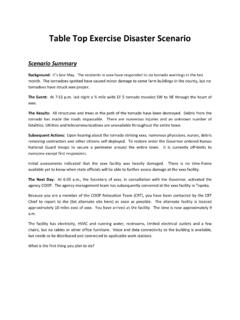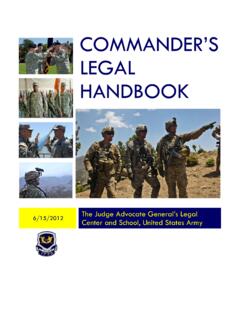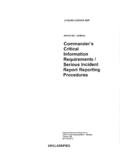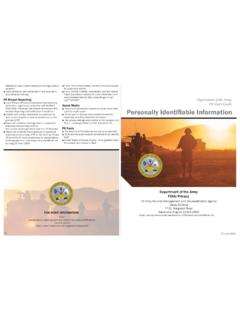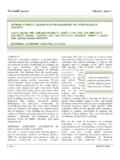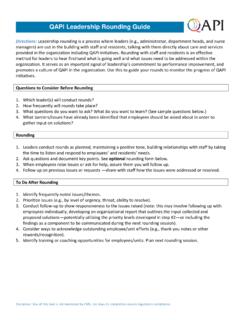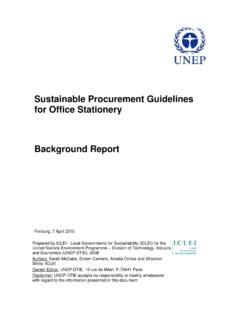Transcription of Background: th The Event - Adjutant General of Kansas
1 Simple Tabletop Exercise Natural Disaster Scenario Scenario #X Catastrophic Building Fire Facilitator s Guide Scenario Summary background : It is 9:30 am on the morning of January 17th, it is 27 degrees outside. The Event : The extreme cold has forced the boilers running the heat system to stress. A spark in the boiler room ignited some leaves and paper that had not been cleaned up. Pallets stored nearby added fuel to the smaller fire and the fire began to gain momentum. For some unknown reason, the fire alarm did not go off, and the fire was not discovered until an employee smelled smoke and went to investigate. She tried to open the door to the room, but the door knob was too hot, so she ran back to her office to call 9 1 1.
2 Another employee pulled the fire alarm and it did not sound. Minutes later the employees were evacuated by calling, emailing and direct notification. The smell of smoke also ensured that everyone had a sense of urgency. The entire building was evacuated in approximately 15 minutes with no injuries. The Results: The Fire Department arrived minutes after the 9 1 1 call. The sprinkler system worked as intended, but the fire, water and smoke damage destroyed all building contents. The building owner predicts that it will take 9 months to a year to make the building habitable again. To the Facilitator: The goal of this exercise is to recreate the disruption caused by a catastrophic fire in an older, multi story structure. The participants will be required to discuss critical notifications and collaborations required to address the damaging effects of this disaster in an organized and effective manner.
3 Key Incident Command System (ICS) elements should be included as a part of the participants response discussions. Intended Participants: This exercise may be run for a government agency or private industry. You may wish to consider inviting: Key Agency Staff: - leadership - Facilities - Human Resources - Evacuation Planner - Floor Captains - Information Tech - Incident Response Team Building Owner: - Property Manager - Local Officials: - Local Emergency Management - Fire Department Running the Exercise Step 1: Decide on a facility, training date, training duration, and who to invite. Invite participants well in advance of your training date to ensure that you can achieve your attendance goal. Allow adequate time for planning and be sure to prepare all materials (digital and hard copy) ahead of time.
4 Step 2: Depending on who is participating in this exercise, it may be a good idea to have the participants go around the table and introduce themselves (name, utility, and job title) so that everyone will understand where any particular individual is coming from during the ensuing discussions. Step 3: Explain to the participants that they are participating in a simple tabletop exercise. There is no time pressure, and that they are there as a group to discuss their roles and responses to an emergency incident. There are no right or wrong answers, but the group should be able to discuss problem or gray areas that may arise during the exercise. Let them know this is good, as the exercise should stimulate discussion that may lead to changes in the way the participants conduct their daily and emergency operations.
5 Also inform the participants that, although the incident is set in fictional Zenith City, it is okay to talk about the incident from their own experiences or in the context of their own protocols and procedures. It will make the exercise more beneficial for the participants if they exchange emergency response practices, protocols, and procedures that they may currently use. Step 4: Be sure to give the background PowerPoint presentation to introduce the participants to the agency COOP Plan and to set the stage for the incident. The exercise goals will also be presented as a part of this presentation. Step 5: Begin the exercise by delivering the first inject. Then, let the discussion evolve naturally on its own after giving the participants the first inject.
6 If necessary, to get the discussion started, simply nudge the participants with a non leading question such as: What would you do in this situation? You could direct this question to the group at large, or, in a group where no one is willing to break the ice, to a particular individual, preferably one that you know serves in a leadership role during the course of their daily activities. You can also refer to the discussion points in the Facilitator s Guide to help jump start discussion. Step 6: Be sure to take notes during the discussions. These notes will form the basis of your after action review. Note problem or gray areas that need more research prior to resolution and who will perform this research or any action items decided upon by the participants.
7 The notes you take will ensure that a summary of the take home points, action items or messages will not be forgotten or overlooked. You may wish to write these points, action items and messages on a flip chart at the end of the exercise. Step 7: Perform an after action review. You may wish to give the participants a 10 to 15 minute break at the end of the exercise to give yourself time to compose your notes prior to conducting the review. Be sure to review the exercise objectives again to determine if the objectives were met by the exercise. Allow the participants to give their feedback on the exercise and the conclusions or decisions that they arrived at during the exercise. The entire tabletop exercise, including the after action review, can typically be conducted in a two to four hour session.
8 This time range is flexible and is dependent on the amount of discussion generated during the exercise. The pace of the exercise is controlled entirely by the facilitator, who manages the discussions and presents the injects. Discussion Points Remember, it is January in Topeka and it is very cold outside. The fire progressed very quickly and very little time was used to remove items from the building. Exercise participants are provided a map of the building and the designated evacuation zones and plan. Inject #1 (09:45 hrs., January 17): It is thought that all personnel were safely evacuated from the building. Several staff are unaccounted for. Points that could be covered in the discussion of Inject #1 include: Discuss what type of command structure should be established.
9 What is the command structure needed to deal with this incident? What is the process to deal with the personnel who are unaccounted for? What mitigation factors are in place to deal with this type of disaster? What actions would be taken at this point? Inject #2 (10:15 hrs., January 17): Agency staff determined that the people who were unaccounted for had left the building for coffee. Fire officials have announced that the building will not be accessible until at least the next day. Points that could be covered in the discussion of Inject #2 include: What do you tell the employees? What are agency leaders doing? How are you communicating with employees that are not at the rally point? What outside notifications would you be making?
10 Inject #3 (10:25 hrs., January 17): Reporters and camera crews from two local news stations have arrived and are looking for the agency spokesman. Employees are dispersing and going home. Points that could be covered in the discussion of Inject #3 include: Who would be the spokesperson? What are the key messages you be delivering? Describe the plan to communicate with employees at this point Inject #4 (11:00 hrs., January 17): The building owner met with the fire chief and has reported to agency leadership . The damage to the building is so significant that ingress will not be allowed until further notice. A timeline for re entry will be provided to the owner when the building has been inspected by structural engineers.
